We're Breaking Down Every Cut Of Beef & How To Actually Cook Them Correctly

Whether the foundation of a hearty bolognese, the punchline in an iconic Wendy's commercial, or the canvas for a Salt Bae-style sprinkle of salt, beef is a staple ingredient in many of our kitchens. At your local supermarket you can find beef packaged under a wide variety of cuts—chuck, round, ribeye, filet, the list goes on. But unless you have formal culinary training or have broken down a cow yourself, it's hard to identify what exactly each cut is and how to use it.
Thankfully, we're here to help. Choosing which cut of meat to use for your weeknight stir fry or for a romantic steak dinner shouldn't be a chore. We chatted with Hannah Mosquera, a butcher shop veteran who now works as a pastry cook at Charlie's of Bay Head in New Jersey, to give us the scoop about all things beef.
But first, we need to break down the whole animal. In every cow, there are eight main parts of meat that are referred to as the primal cuts, displayed in the chart below.
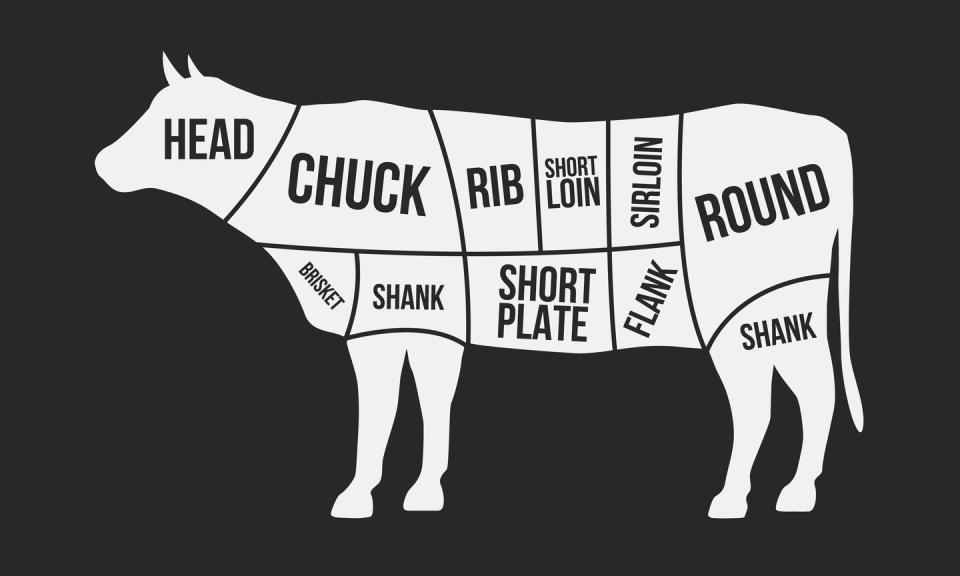
While each area includes different subprimal cuts, the primal cuts are a great starting point to determine the taste, texture, and ideal cooking method of the meat. We'll take an in-depth look at each so you can make a more informed choice on your next grocery run.
Chuck
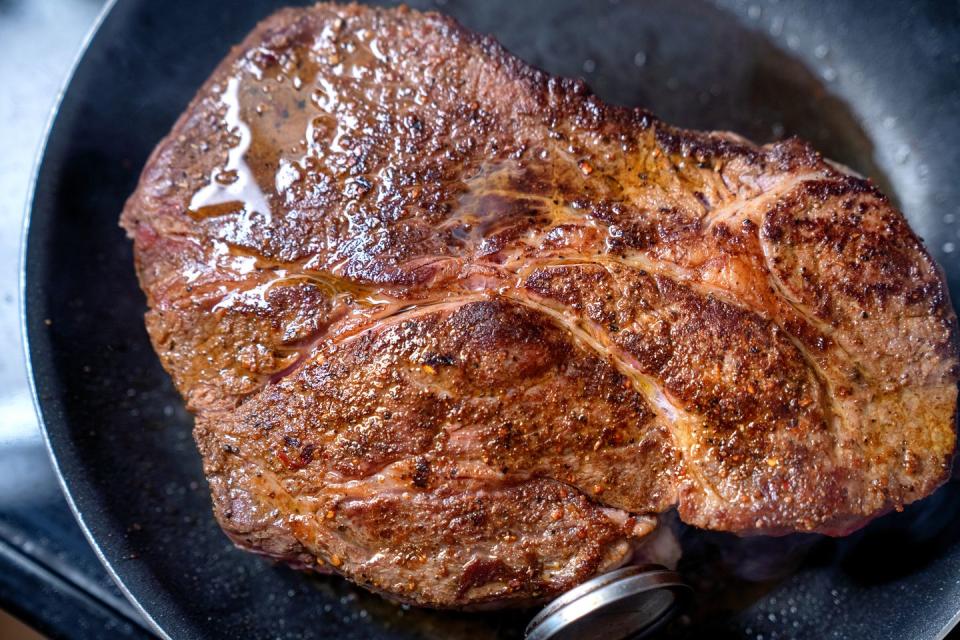
The chuck is located near the front of the animal, making up the cow's shoulder, neck, and upper arm. These muscles get a lot of exercise from constant movement and supporting the cow's body weight, which means the flesh is generally on the tougher side. There's also a hearty balance of fat and connective tissue throughout the chuck. Because of its texture, it's one of the more affordable cuts of beef available.
But that doesn't mean the meat is undesirable. In fact, chuck is great to use when recipes call for long cook times, like slow roasting or braising. After prolonged exposure to heat, the connective tissue and fat dissolves into your cooking liquid and adds extra richness.
If you don't have the time to cook chuck low and slow, another solution is grinding it. Many store-bought packages of ground beef are made with chuck and supplemented with some extra fat. When the pieces of meat are fine enough, you can apply chuck to various quick cooking methods without sacrificing texture or flavor.
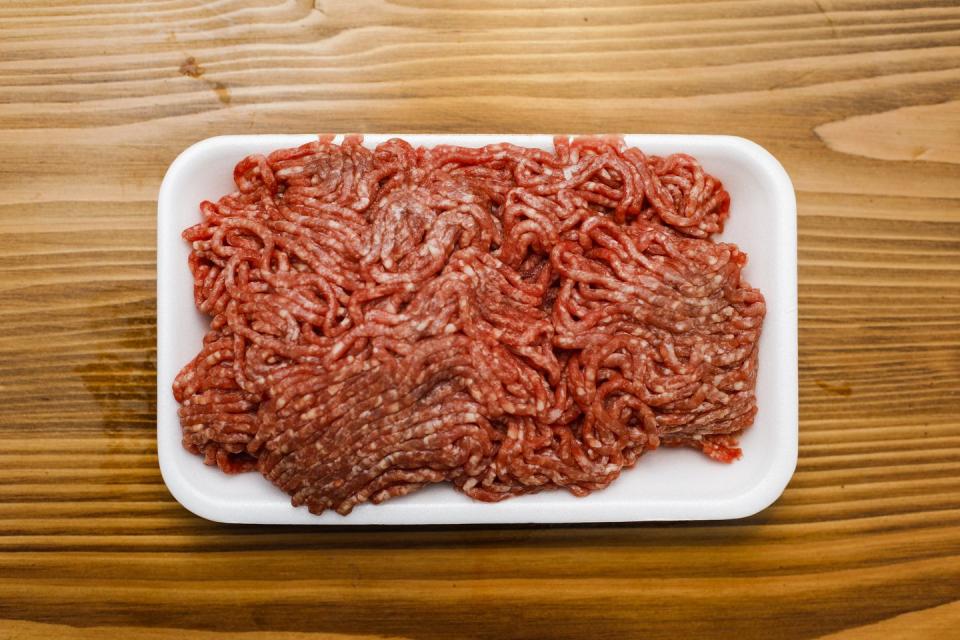
Chuck is commonly sold as chuck roast, chuck roll, chuck eye round, or simply as stew meat. But if you do some digging, you might be able to find some inexpensive chuck cuts that mimic the experience of eating a fancy steak.
Flat iron steaks, which come from the shoulder, are increasing in popularity. According to Mosquera, they're "good for dinner parties and serving multiple people since they’re good steaks to slice and come in decently large sizes." If you are cooking a flat iron steak, however, it's essential that you cut the steak against the grain of muscles to minimize chewiness.
One of the chuck's best kept secrets is the Teres Major, also referred to as the mock tenderloin. This lean piece from the upper section of the cow's arm resembles the more expensive tenderloin but without the added cost. "I'd always advocate [the mock tenderloin] to customers since it's so similar to a filet mignon," Mosquera says.
Shank
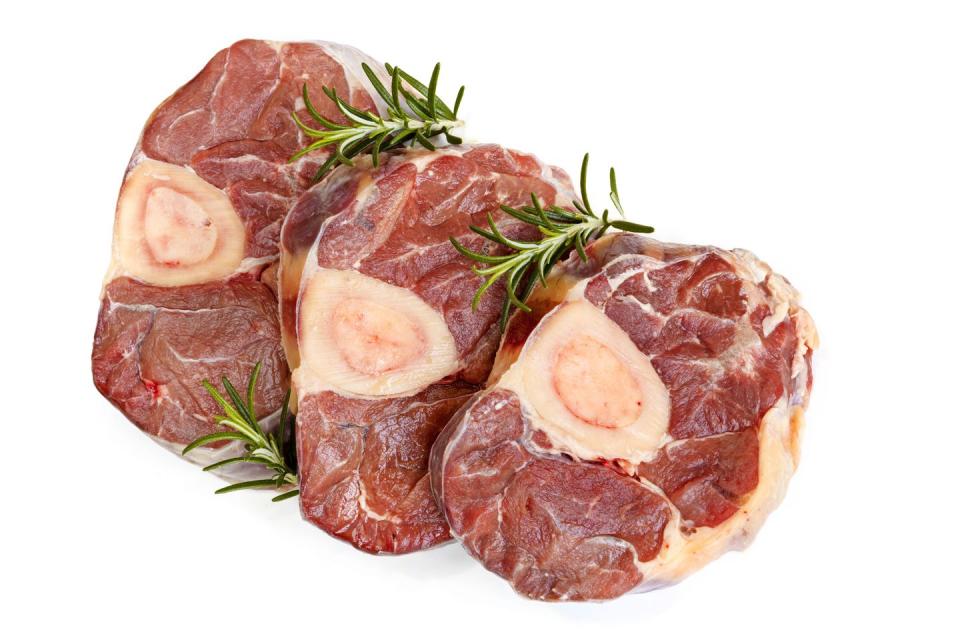
The shank refers to a section of the cow's legs. Because of the heavy lifting and constant movement, the meat along the shank is extremely tough and meant to be braised. "Quick-cooking methods aren’t substantial enough to break down the tough muscle and fibers," says Mosquera."By braising and stewing, you’re actually overcooking the meat until it falls apart, which gives the illusion of tenderness when paired with lots of braising liquid or sauce instead of the dryness associated with overcooking meat."
In most supermarkets and butcher shops, this meat is sold as cross cuts that feature a slice of the leg bone in the center. And within that slice of bone is a section of the marrow. The marrow adds a luxurious glossy texture and finish to the cooking liquid to dishes like osso buco and other stews.
Brisket
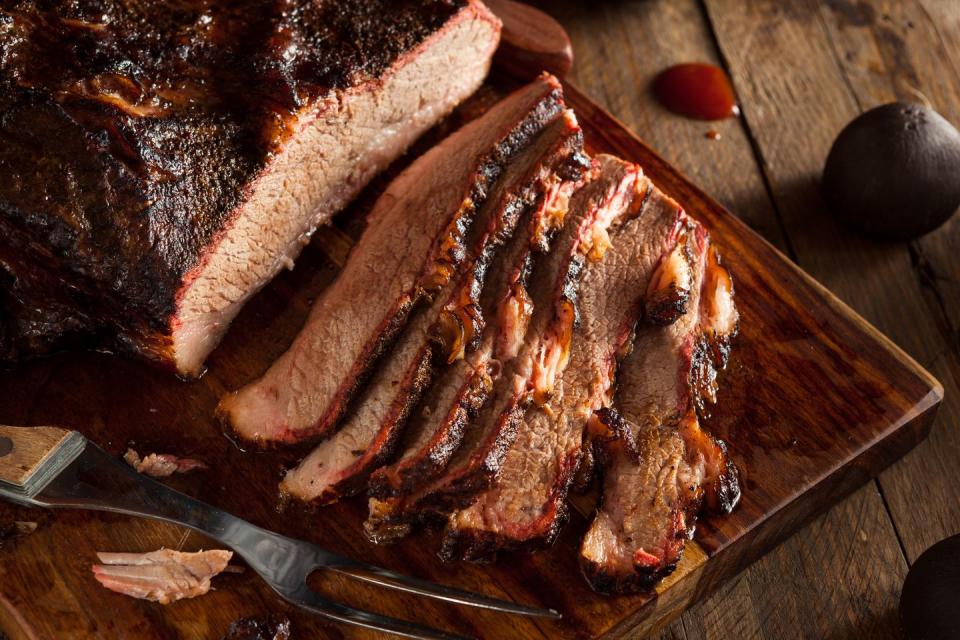
Universally beloved by barbecue pitmasters, the brisket is the breast of the cow and one of the toughest cuts. The grains of brisket are much coarser than those of other parts of the animal, so the cut requires some seriously long cook time. The high collagen content within the brisket's intramuscular fat eventually converts to gelatin and creates an extremely tender finished product.
This cut is commonly used in barbecue applications as well as brining and slow cooking in dishes like corned beef and pastrami. It is not recommended for quick-cooking methods like stir-frying or searing.
Rib
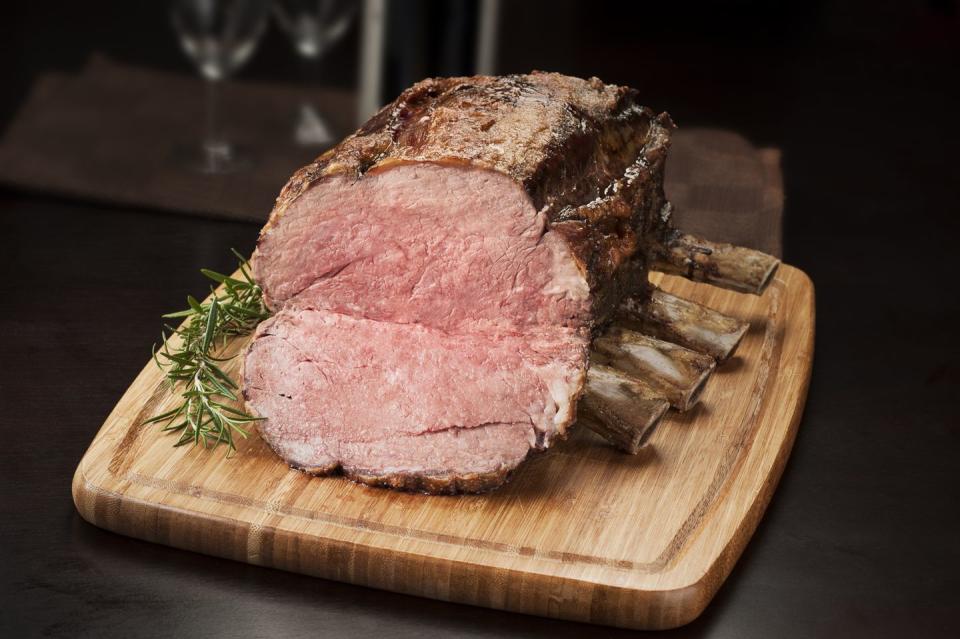
The rib is from, you guessed it, the cow's ribs, but not all 26 of them. It only contains ribs six through 12. The rib primal is located behind the chuck, an area of the cow doesn't get much movement. This means the meat is extremely tender with plenty of flavorful intramuscular fat (also known as marbling). Since you don't need to go through the extra time and effort to get to your ideal texture, meat from the rib primal cut is among the most expensive.
It's also the most versatile when it comes to individual cuts. Popular cuts you can find at the grocery store include ribeye, prime rib roasts, tomahawk steak, and cowboy steaks. To take full advantage of the rib's tenderness you shouldn't overcook it. We suggest grilling steaks and serving them with spiced butter, thinly slicing them for bulgogi, or making a beautifully medium-rare prime rib roast.
Short Plate
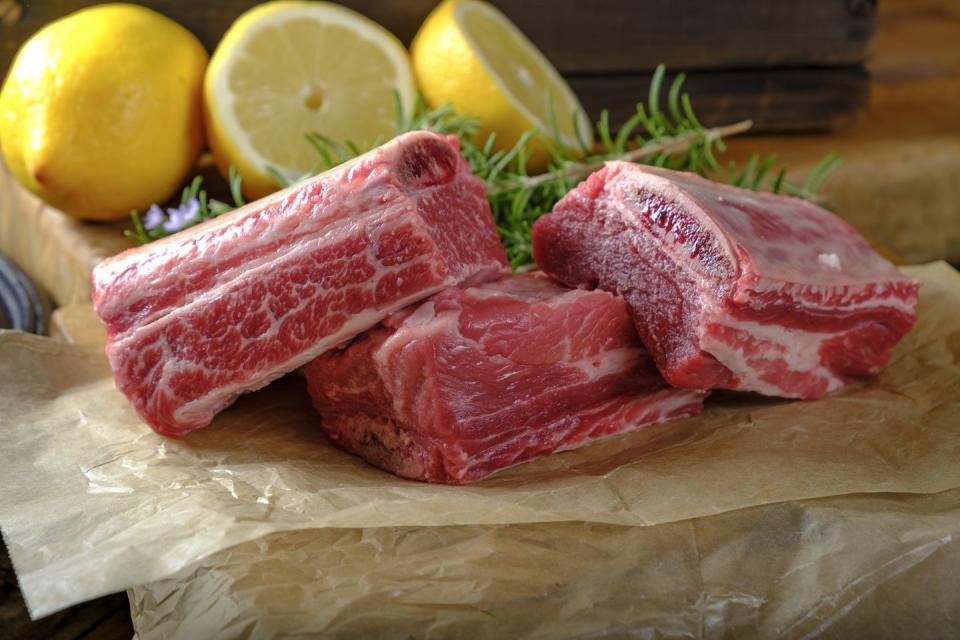
The short plate is a section of the cow's underbelly that has plenty of flavorful fat. It's relatively inexpensive, especially when you consider how much flavor comes in the small package. The short plate is home to two of our favorite beef cuts: short ribs and skirt steak.
Short ribs have a tougher texture and work wonderfully in a braise, like our slow cooker short ribs. It's also commonly thinly sliced and used for Korean barbecue. Skirt steak, on the other hand, is a great quick-cooking steak that provides incredible flavor at a low cost. When sliced against the grain, it makes for an ideal filling for tacos.
Flank
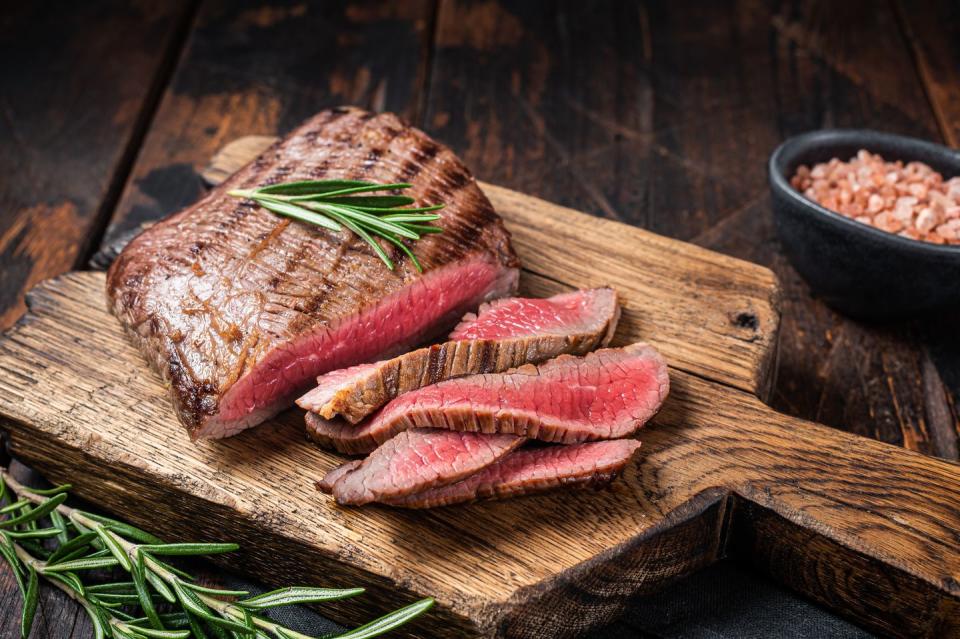
The flank primal gets its name from its location on the cow—the lower part of its abdomen. The flank steak rests just below the lean loin of the cow and has a deep beefy flavor. It's often compared to the nearby skirt steak due to its common preparation of quick cooking and slicing for tacos or fajitas. However, it's significantly less fatty than skirt steak and more finicky to cook. It's essential to not cook this steak past medium, or else it'll be tough and dry.
Loin
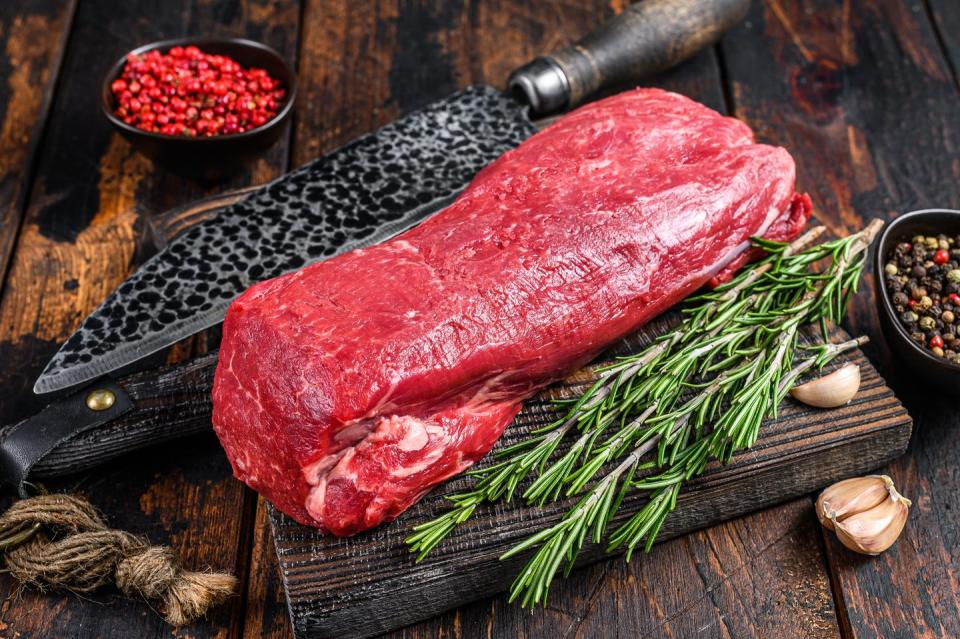
The loin is a complex primal cut that includes various popular cuts you may find at the grocery store. The loin meat is located beneath the cow's backbone and does little to no exercise. Because of this, the loin contains soft, lean, and tender meat that carries a high price tag.
There are several different parts of the loin. The short loin, which sits closest to the rib, gives us cuts like T-Bones, New York strips, and Porterhouses. These pricey cuts have plenty of marbling and tender meat, so they're best prepared hot and fast on a grill or in a pan.
"If I’m gonna be treating myself to a steak to cook at home, I love a New York strip," Mosquera says. "It has decent marbling and a nice fat cap and also decent pricing in comparison to more expensive cuts."
The tenderloin gets its name because it basically stays still at all times. It's a lean cut, with a soft and silky texture. One drawback to its lack of fat is that it easily dries out when overcooked. However, if cooked properly and served with plenty of butter, the tenderloin is an extremely luxe piece of meat. It's commonly sold as filet mignon or Chateaubriand.
Lastly, there's the sirloin. This part of the loin is divided into a top and bottom sirloin, where the former is leaner and more tender than the latter. Both are relatively affordable cuts of meat. The sirloin is often packaged as tri-tip or flap meat. It's a great choice for stir frying and pan searing.
Round
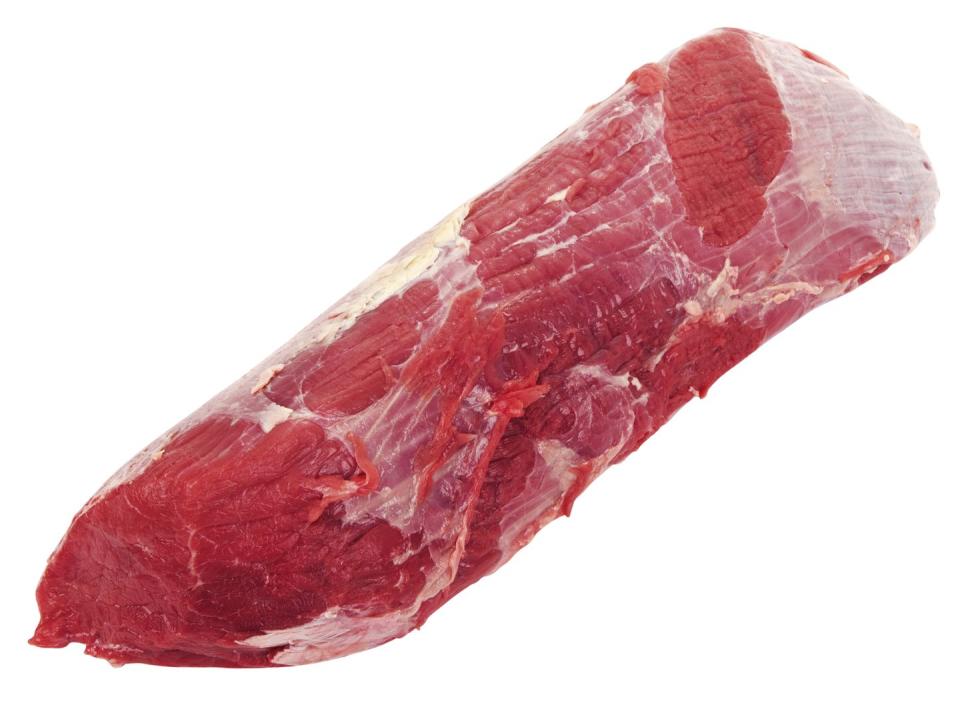
The last primal cut of beef is the round, which is located at the rear end of the cow. This lean cut is used for much of the cow's movement, which leaves you with tough and lightly flavored meat. The top part of the round, aptly called the top round, can be used for London broils and roasts. However, they need to be thinly sliced or else they'll be too chewy.
The bottom round is extremely tough and chewy and is ideal for stewing and slow roasting.
What's your favorite cut of beef to cook? Let us know in the comments.
You Might Also Like


